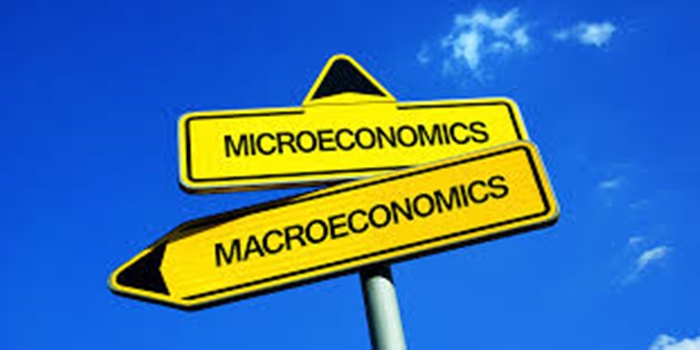In this article, we discussed micro and macroeconomics, the examples, furthermore we also talked about the different and why the difference matters.
Definition
Microeconomics is the study of individual units in the economy, such as consumers, businesses, and markets. It focuses on how decisions are made and how resources are allocated at the personal or firm level.
Topics in Microeconomics:
Demand and supply
Consumer behavior
Production and costs
Market structures (perfect competition, monopoly, etc.)
Pricing strategies
Labor markets
Elasticity
The Examples of Micro Economics:
- Individual Decisions and Behavior:
Consumer Choice:
How individuals decide what to buy based on preferences, income, and prices. For example, deciding whether to buy a car or go on a vacation, considering the opportunity cost of each choice.
Labor Supply and Demand:
How individuals decide how much to work based on wages, job opportunities, and preferences.
Business Decisions:
How businesses decide what to produce, how much to produce, and what price to charge, taking into account costs, demand, and competition.
- Market Interactions:
Supply and Demand:
How supply and demand interact to determine the price and quantity of goods and services in a specific market. For instance, analyzing the impact of a new competitor on a local business’s sales and pricing.
Competition:
How businesses compete with each other in a market to attract customers. For example, two businesses competing for customers by offering discounts.
Resource Allocation:
How resources (like labor, capital, and land) are allocated among different uses in a market.
Cost Analysis:
How businesses analyze their production costs to make decisions about pricing and output.
- Specific Concepts:
Opportunity Cost:
The value of the next best alternative that is forgone when a choice is made.
Elasticity:
The responsiveness of quantity demanded or supplied to changes in price, income, or other factors.
Deadweight Loss:
The loss of economic efficiency when the equilibrium for a good or service is not Pareto optimal.
Externalities:
The costs or benefits of a transaction that affect a third party who is not involved in the transaction.
Firms (producers/businesses): How companies decide what to produce, how much to produce, what prices to charge, how many workers to hire, and how to allocate their resources to maximize profits.
Individual Markets: How supply and demand interact to determine prices and quantities in specific markets for goods, services, and factors of production (like labor or capital)
Macro Economics
The Macroeconomics is the branch of economics studying the overall economy on a large scale. Macroeconomics means studying inflation, price levels, economic growth, national income, gross domestic product (GDP), and unemployment numbers.
Macroeconomics looks at the economy as a whole. It deals with large-scale economic factors that impact countries or regions, like economic growth, inflation, unemployment, and national income.
Topics in Macroeconomics:
Gross Domestic Product (GDP)
Inflation and deflation
Unemployment rates
Fiscal and monetary policy
Interest rates
Exchange rates
International trade and finance.
The Different Between Micro and Macro Economics:
The Micro Economics:
Individual economic agents and markets.
Bottom-up approach, focusing on specific markets and decisions
Prices, quantities, individual decisions.
Price of a specific good, consumer choices.
Price determination, supply & demand, market structure, consumer behavior, firm production decisions, resource allocation
The Macro Economics:
Aggregate economy (national, global)
Top-down (overall trends impact individual units)
Inflation, unemployment, GDP, economic growth, interest rates, government policy, international trade
Aggregate demand/supply, national income accounting, Phillips Curve, fiscal and monetary policy models.
Understand and manage overall economic performance, stability, and growth.
Why the Difference Matters:
Understanding Economic Phenomena:
Microeconomics helps us understand why individual prices change, how specific industries operate, and what incentives drive individual choices. For example, why is the price of tomatoes higher in the rainy season? (Micro)
Macroeconomics helps us understand why the overall cost of living is increasing, what causes recessions, and how national policies affect job availability. For example, what caused Nigeria’s inflation rate to reach over 33%? (Macro)
Policy Formulation:
Microeconomic policies aim to correct market failures, regulate specific industries, or influence the behavior of individual consumers/firms. Examples include anti-monopoly laws, consumer protection regulations, or subsidies for specific industries (like agriculture).
Macroeconomic policies aim to stabilize and grow the entire economy. Central banks use monetary policy (interest rates, money supply), and governments use fiscal policy (taxation, spending) to achieve goals like full employment, price stability, and sustainable economic growth.
Business and Investment Decisions:
Microeconomic insights are crucial for business managers deciding on pricing, production levels, hiring, and competitive strategy within their specific market. A business owner in Port Harcourt needs to understand the local demand for their products and the prices of their competitors.
Macroeconomic insights are vital for investors, large corporations, and policymakers who need to understand the broader economic climate. A multinational company considering investing in Nigeria will look at the country’s GDP growth, inflation rate, and exchange rate stability.
Interdependence: It’s important to note that microeconomics and macroeconomics are not mutually exclusive; they are deeply interdependent.
Macroeconomic phenomena are ultimately the result of millions of individual microeconomic decisions. For example, overall inflation (macro) is the sum of price changes in individual markets (micro).
Macroeconomic conditions significantly influence microeconomic decisions. A recession (macro) will affect an individual firm’s hiring decisions (micro) and a household’s spending patterns (micro).
Conclusion
Microeconomics and macroeconomics provide important outlines for understanding the complex world of economic activity. Microeconomics gives us a detailed view of the trees, while macroeconomics provides a sweeping view of the entire forest. A comprehensive understanding of economic realities requires insights from both perspectives.
READ; How Government Policies Shape Economic Growth


